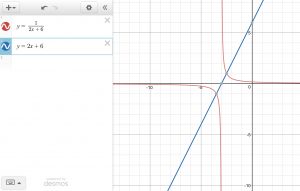This week in Pre-Calculus 11 we started a new unit. This unit includes absolute values and how we can graph them. I will show you how to graph an abosolute value linear function. There are steps that we need to follow when dissecting an equation.
1. Graph the parent function
2. Find the y-intercept
3. Find the slope
4. Graph absolute value
5. Find the critical point (solution)
Something to look for when graphing linear absolute value functions is the x-intercept. This is important because the x-intercept is the critical point, the point where the graph changes direction. Some equations will have no solution which means they don’t touch the x-axis.



